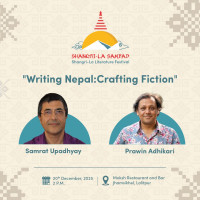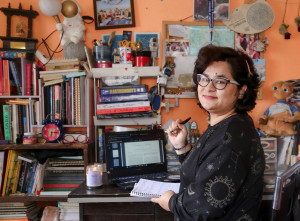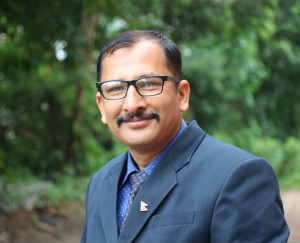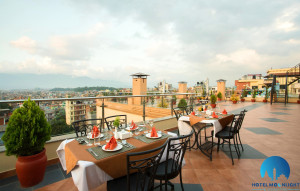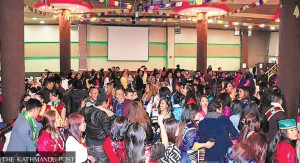Culture & Lifestyle
Mha Puja has adapted, but its essence remains
It is a self-worship ritual that marks the beginning of Nepal Sambat and focuses on honouring one’s body, mind, and life, though modern lifestyles and distance have changed how it is observed.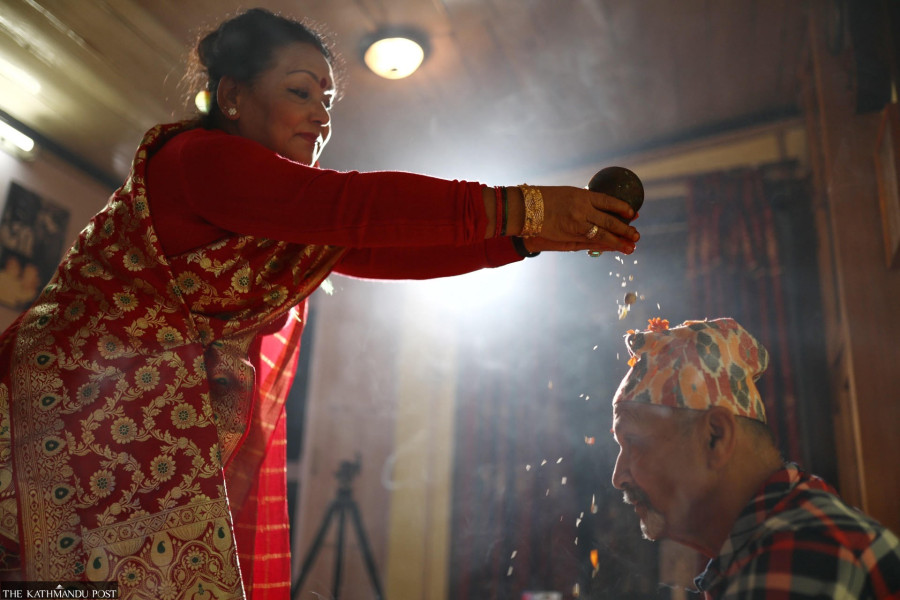
Sanskriti Pokharel
Newa households in the Kathmandu Valley begin their new year differently. They worship themselves.
The second day of Tihar, known as Mha Puja, translates to ‘worship of the body’ in Nepal Bhasa. It is observed on Kartik Shukla Pratipada, the day after Laxmi Puja. In the Newa calendar, Laxmi Puja marks the last day of the year. Mha Puja marks the first day of Nepal Sambat, the community’s lunar calendar.
Tihar, or Swanti in Nepal Bhasa, is celebrated across three days by the Newa community. Laxmi Puja comes first. Mha Puja follows the next day. Kija Puja, also known as Bhai Tika, completes the sequence. If the first day honours the goddess of wealth and the third day celebrates siblings, the middle day turns inward. It is a ritual focused not on gods or ancestors, but the living self.
Mha Puja is rooted in self-awareness. The ritual purifies the mind, body, and speech before stepping into a new year. Preparing oneself is considered essential before seeking blessings from deities. “This ritual reminds us to acknowledge the god within us,” says Pragati Maharjan, a resident of Lalitpur. “We worship idols throughout the year. Mha Puja makes us pause and celebrate ourselves.”
The practice is not driven by vanity. It is an act of discipline and gratitude. The body is seen as a sacred vessel that carries consciousness, and honouring it is considered a duty.
The origin of Mha Puja is undocumented. It has been passed down for centuries within the Newa and Bajracharya communities. One legend, often linked to Nepal Sambat, speaks of Sankhadhar Sakhwa. He is believed to have cleared the debts of the people of Kathmandu 1145 years ago. Locals marked a new beginning with a fresh era. Nepal Sambat was born.
This year, Nepal Sambat 1145 ends on Laxmi Puja and 1146 begins on the day of Mha Puja.
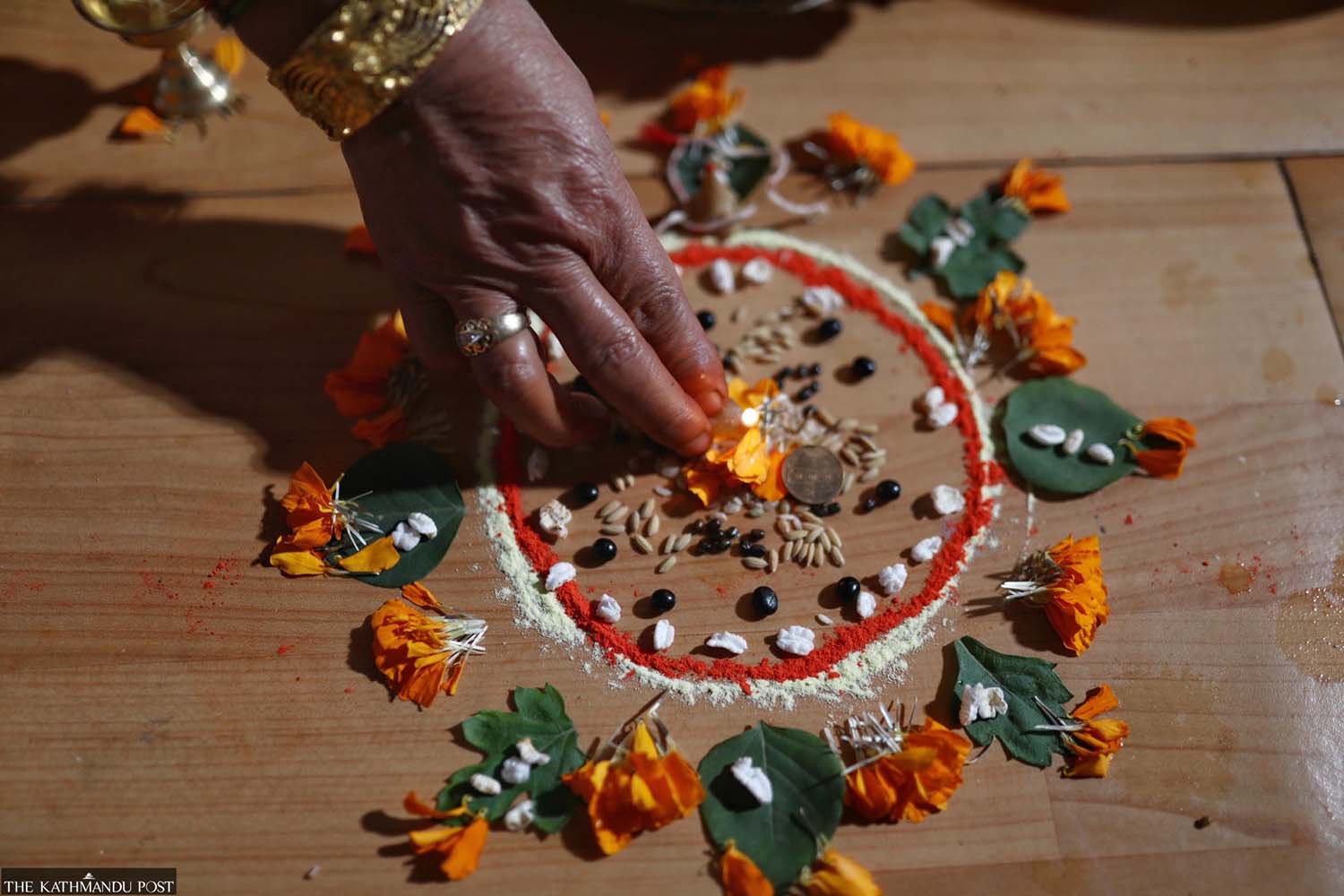
Before Mha Puja begins, the house is cleaned, and the ritual area is prepared carefully. Each family member sits in a designated spot, from the eldest to the youngest. While arrangements vary across households, one element remains constant: the mandala.
Traditionally, each participant draws a mandala on the floor using stone powder. The design represents the individual self and includes symbols of protection, abundance, and purity. The mandala becomes the focal point of the ritual.
Today, many households use brass or paper stencils instead of freehand drawings. “In the past, drawing a mandala required precision and patience,” says Dhirendra Man Shrestha, 72, a resident of Kathmandu. “Now, many households use ready-made tools. It is faster and more uniform.”
He observes that some families still follow the elaborate traditional process. Others simplify it due to time constraints. “Newa cultural practices can be very detailed. It is not always realistic now. So Mha Puja has adapted, but its essence remains.”
Laxmi Puja centres on wealth, Kija Puja highlights family ties, and Mha Puja focuses on physical and spiritual sustenance. The offerings laid out in front of each mandala reflect this purpose.
A typical setup includes grains of rice, lentils, puffed paddy, oil lamps, fruits, betel nuts, flowers, sweets, rice wine, and sagan. The sagan plate usually contains a boiled egg, fish, yoghurt, and rice wine, symbolising strength and good fortune. Each item placed in front of the self carries meaning. Food represents nourishment. Oil lamps represent clarity. Alcohol represents celebration.
Unlike other rituals that offer food to deities or ancestors, Mha Puja encourages individuals to consume what is placed before them. It is a complete cycle of giving and receiving within one’s own body.
Newa families in urban settings now observe Mha Puja differently. Space is limited and schedules are packed. Some complete the ritual in under an hour, and others merge it with Bhai Tika to save time.
Also, Shrestha points out that life today is very different from a few decades ago. People are busier, and everything moves faster than before. He says that adapting Mha Puja to modern life is important, but it is also crucial not to shorten it or skip important steps. If essential rituals are left out, the cultural meaning of Mha Puja could be lost over time. However, if families find ways to make the process quicker without removing these key rituals, the tradition can continue to be meaningful and preserved for future generations.
Moreover, social media has revived interest among younger generations. Copper mandala plates have gone viral online. Households that once used chalk or powder now opt for polished metal designs.
Karmendra Shrestha, grandson of Dhirendra Man Shrestha, reflects on how the ritual has evolved with distance and modern life. He notes that the festival is meant to acknowledge one’s body and pray for health and longevity. It has psychological and philosophical benefits, especially when shared with loved ones.
However, Shrestha says, “With many living abroad, the experience of celebrating together has changed.” Still, he emphasises that the essence of the ritual remains: to honour oneself and one’s life, which he calls a beautiful practice.




 13.12°C Kathmandu
13.12°C Kathmandu


.jpg&w=200&height=120)


